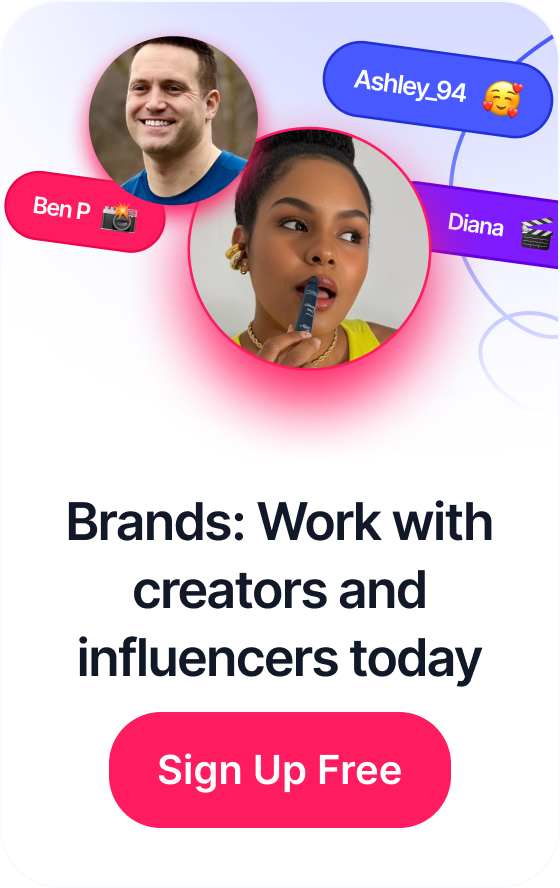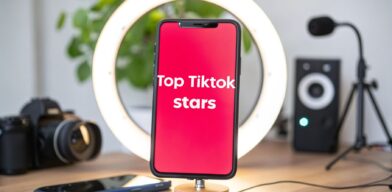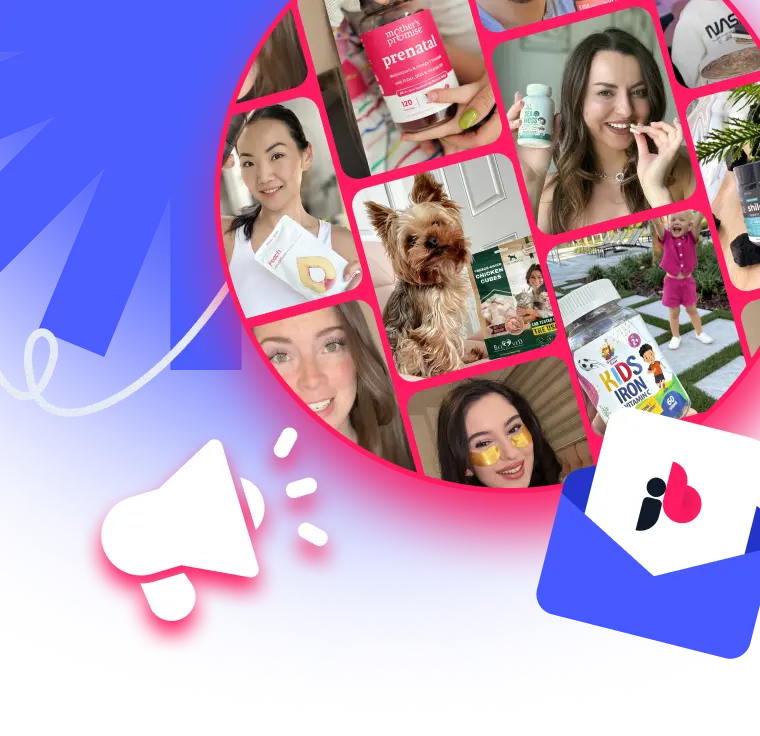 How Many Followers on TikTok to Go Live: Your Complete Guide
How Many Followers on TikTok to Go Live: Your Complete Guide
Shopify Ads are a digital advertising platform provided by Shopify. They are significant for their user-friendly interface and are accessible to millions of Shopify store owners. Brand owners can leverage Shopify Ads to efficiently promote and sell their products or brand, reaching their target audience with ease.
This article guides us through how you can engage your target audience through social media as well as how to conduct email marketing campaigns for Shopify ads. Next, we’ll discuss how to partner with influencers as well as how to invest in paid ads. After that, it provides insights on how to engage push notifications and how to create a referral marketing program. Lastly, we’ll answer some frequently asked questions (FAQs).

Table of Contents
6 Steps to Engage Your Target Audience Through Social Media
Engaging your audience through social media for Shopify ads requires a strategic approach. Here’s a detailed guide:
1. Understanding Your Audience
Begin by thoroughly understanding your target audience. Research their demographics, interests, and social media behavior. For instance, if your audience is predominantly young adults, focus on platforms like Instagram or TikTok. Use analytics tools to gather data, and create personas to better visualize your typical customer. Tailor your content to resonate with these personas, ensuring relevance and appeal.
2. Creating Compelling Content
Develop content that captivates and engages. This could be high-quality images of your products, engaging videos, or informative blog posts. Ensure the content is visually appealing and aligns with your brand’s voice. Use storytelling to make your posts more relatable and engaging. Experiment with different formats – like carousel posts, stories, or live sessions – to see what resonates best with your audience.
3. Leveraging Social Media Features
Utilize the unique features of each social media platform. On Instagram, use Stories and Reels to showcase products in a dynamic way. On Facebook, consider joining groups related to your niche and participating in conversations. Use Twitter polls to engage users and gather feedback. These features not only increase engagement but also boost your visibility on these platforms.
4. Consistent and Timely Posting
Consistency is key in social media. Create a content calendar to plan your posts. This ensures a steady stream of content and keeps your brand top of mind for your audience. Pay attention to the best times to post, which varies depending on the platform and your audience’s online habits. Use scheduling tools to automate posting at these optimal times.
5. Engaging with Your Audience
Actively engage with your audience. Respond promptly to comments, messages, and reviews. This interaction humanizes your brand and builds a community around it. Encourage user-generated content by running contests or featuring customer photos with your products. This not only provides you with additional content but also makes customers feel valued and part of your brand’s story.
6. Measuring and Adapting
Finally, measure the impact of your social media efforts. Use tools like Google Analytics and native analytics from social platforms to track engagement metrics like likes, shares, comments, and conversion rates. Analyze what’s working and what’s not. Regularly adapting your strategy based on this data is crucial for ongoing improvement and sustained engagement.
By following these steps and continually refining your approach, you can effectively engage your audience through social media for Shopify ads, fostering a loyal customer base and driving sales. Now, let’s look at how you can conduct email marketing campaigns for your Shopify ads.
12 Steps to Conduct Email Marketing Campaigns for Shopify Ads
Conducting effective email marketing campaigns for Shopify ads involves a series of strategic steps:
1. Establish Clear Goals
Start by defining clear, measurable objectives for your campaign. Are you aiming for direct sales, brand awareness, or customer retention? Setting goals helps in creating focused content and measuring success. For example, a goal could be increasing sales by 20% or growing your email list by 15%.
2. Build a Targeted Email List
Accumulate a list of emails from current customers, website visitors, and potential leads. Use Shopify’s integrated tools for collecting emails, like pop-up forms or checkout prompts. Ensure your list is GDPR compliant, obtaining consent from subscribers.
3. Segment Your Audience
Divide your email list into segments based on customer behavior, purchase history, or demographics. This allows for more personalized and relevant email content. For example, separate customers who frequently purchase a particular product category.
4. Craft a Compelling Subject Line
The subject line is the first impression. Make it catchy, clear, and relevant to the recipient. Avoid clickbait; instead, use actionable language or personalization, like including the recipient’s name.
5. Design an Engaging Email Template
Use a clean, visually appealing template that reflects your brand’s style. Shopify offers customizable templates. Ensure your emails are mobile-friendly, as many users check their email on mobile devices.
6. Create Valuable and Relevant Content
Your email should provide value to the reader. This could be exclusive deals, informative content, or early access to new products. Avoid overwhelming the reader with too much information; keep it concise and focused.
7. Include Clear Calls-to-Action (CTAs)
Every email should have a clear CTA, guiding the reader on what to do next. Whether it’s ‘Shop Now’, ‘Learn More’, or ‘Subscribe Today’, make your CTAs prominent and actionable.
8. Personalize Your Emails
Personalization increases engagement. Use data from your Shopify store to personalize content, such as recommending products based on past purchases or browsing history.
9. Test and Optimize
Before sending out a mass email, test different elements like subject lines, email layouts, and CTAs. Use A/B testing to see what works best with your audience.
10. Automate Email Campaigns
Utilize automation tools available in Shopify for sending out emails at predetermined triggers, like abandoned cart emails or birthday greetings. This saves time and ensures timely communication with your customers.
11. Analyze and Adjust
After each campaign, analyze its performance. Look at open rates, click-through rates, and conversion rates. Use these insights to refine future emails, adjusting content and strategy as needed.
12. Stay Consistent but Not Intrusive
Maintain a regular emailing schedule, but avoid overwhelming your subscribers. Balance is key; too many emails can lead to unsubscribes, while too few can make your audience forget about your brand.
By following these steps, you can create effective, engaging email marketing campaigns for your Shopify store, enhancing customer engagement and driving sales. Now, let’s discuss how you can partner with influencers for Shopify ads.
15 Steps to Partner with Influencers for Shopify Ads
Partnering with influencers for Shopify ads involves a series of strategic steps:
1. Identify Your Goals
Begin by clearly defining the objectives of your influencer marketing campaign. Consider what you want to achieve – it could be increasing brand awareness, driving traffic to your Shopify store, or boosting sales. Understanding your goals will help in choosing the right influencers and measuring the success of the campaign. This clarity of purpose ensures that your efforts are focused and aligned with your overall marketing strategy.
2. Understand Your Audience
Knowing who your target audience is pivotal. Analyze their demographics, interests, and online behavior. This understanding will guide you in choosing influencers who have a following that mirrors your target market. For instance, if your audience is predominantly interested in sustainable living, you would look for influencers who advocate for environmental issues.
3. Research Potential Influencers
Start searching for influencers who align with your brand’s values and audience. Use social media platforms, influencer marketing tools, or even Google searches to find potential candidates. Pay attention to their engagement rates, content quality, and audience demographic. It’s not just about the number of followers; their audience should be engaged and relevant to your brand.
4. Evaluate Influencer Compatibility
Once you’ve identified potential influencers, assess their compatibility with your brand. Check their past collaborations, the tone of their content, and how they interact with their audience. The influencer’s brand should align with yours in terms of values, aesthetics, and messaging. This alignment is crucial for authenticity and the effectiveness of your campaign.
5. Reach Out to Influencers
Craft personalized outreach messages to the influencers you’re interested in working with. Explain why you think there’s a good fit and what your brand is about. Be clear about what you’re offering, whether it’s free products, payment, or a commission-based arrangement. Personalized messages show that you’ve done your research and are genuinely interested in a partnership.
6. Discuss Collaboration Details
Once an influencer expresses interest, discuss the specifics of the collaboration. This includes the type of content, the number of posts, timelines, and compensation. Make sure both parties are clear about expectations and deliverables. This step is crucial for setting a clear framework for the partnership.
7. Negotiate and Finalize the Agreement
Negotiate terms that are beneficial for both parties. Once you’ve reached an agreement, put everything in writing. A formal contract should outline the details of the collaboration, including payment terms, content ownership, and any legal requirements. This ensures transparency and reduces the risk of misunderstandings.
8. Provide Product or Brand Information
Equip your influencer with all the necessary information about your products or brand. This could include product samples, brand story, key messages, and any specific campaign hashtags or links. The more informed they are, the more authentic and effective their promotion will be.
9. Collaborate on Content Creation
Work with the influencer on content creation. While it’s important to give them creative freedom, you should also ensure the content aligns with your brand’s voice and goals. Collaboration at this stage can lead to more authentic and engaging content.
10. Review and Approve Content
Before the content goes live, review it to ensure it meets your standards and aligns with the agreed terms. Provide feedback if necessary, but also respect the influencer’s style and audience. This step is crucial for maintaining brand consistency.
11. Launch the Campaign
Once the content is approved, the influencer can publish it on their platforms. Ensure that the timing aligns with any larger marketing strategies or campaigns you have running on your Shopify store.
12. Promote the Influencer’s Content
Amplify the influencer’s content through your brand’s social media channels and other marketing platforms. This not only increases reach but also shows appreciation for the influencer’s work.
13. Monitor Campaign Performance
Track the performance of the influencer campaign using analytics tools. Look at metrics like engagement rates, traffic to your site, and conversion rates. This data will help you understand the impact of the campaign.
14. Provide Feedback and Maintain Relationship
After the campaign, provide feedback to the influencer. Whether the results were positive or there’s room for improvement, constructive feedback is valuable. Maintain a good relationship with the influencer for potential future collaborations.
15. Analyze and Learn for Future Campaigns
Finally, analyze the overall performance of the campaign. Understand what worked well and what could be improved. This analysis will inform your strategy for future influencer partnerships and help optimize your marketing efforts.
Now that we know how to partner with influencers, let’s discuss how you can invest in paid ads.
10 Steps to Invest in Paid Ads
Investing in paid ads for Shopify requires a structured approach:
1. Set Clear Objectives
Before investing in paid ads, define your campaign objectives. Are you aiming to increase brand awareness, drive sales, or promote a new product launch? Setting specific, measurable, achievable, relevant, and time-bound (SMART) goals helps in creating focused ad campaigns.
2. Understand Your Target Audience
Knowing your target audience is crucial. Analyze their demographics, interests, and online behaviors to create ads that resonate with them. Use Shopify’s analytics to gain insights into your current customer base. This understanding aids in tailoring your ads to the audience most likely to convert.
3. Choose the Right Ad Platforms
Select ad platforms that align with your target audience and objectives. Popular choices include Google Ads, Facebook, Instagram, and Pinterest. Each platform has unique features and audience demographics. For instance, Instagram and Pinterest are ideal for visually appealing products, while Google Ads can capture high-intent traffic.
4. Set a Budget
Determine your advertising budget based on your objectives and the potential return on investment (ROI). Start with a modest budget to test different ad formats and platforms. Monitor the performance closely and adjust the budget accordingly. Ensure the budget is spread over a period to maintain a consistent presence.
5. Create Engaging Ad Content
Design ad content that captures attention and conveys your message succinctly. Use high-quality images or videos, engaging copy, and a clear call-to-action (CTA). The content should align with the platform’s specifications and best practices. For example, short and captivating videos work well on Instagram.
6. Optimize for Conversion
Ensure your ads lead to a landing page that is optimized for conversion. The landing page should have a clear message, a strong value proposition, and an easy path to purchase. Consistency in messaging between the ad and the landing page is key to maintaining user interest.
7. Use A/B Testing
Conduct A/B testing on different elements of your ads, such as headlines, images, and CTAs. This helps in understanding what resonates with your audience and improves ad performance. Test one element at a time for clear insights.
8. Implement Targeting Strategies
Utilize targeting options to reach your ideal audience. This includes demographic targeting, interest targeting, remarketing, and lookalike audiences. For instance, remarketing targets users who have previously interacted with your website, increasing the likelihood of conversion.
9. Monitor and Analyze Ad Performance
Regularly monitor your ad campaigns using analytics tools. Track metrics like click-through rate (CTR), conversion rate, and return on ad spend (ROAS). This data helps in identifying what’s working and what’s not, allowing for timely adjustments.
10. Refine and Iterate
Based on the performance data, refine your campaigns. Adjust targeting, ad creative, and budget allocation for improved performance. Continuously iterating based on data-driven insights is key to successful paid advertising.
By following these steps and consistently analyzing and refining your approach, you can effectively invest in paid ads for your Shopify store, leading to increased traffic, conversions, and sales. Now, let’s discuss how to engage push notifications for Shopify ads.
12 Steps to Engage Push Notifications for Shopify Ads
Engaging push notifications effectively for Shopify ads involves a structured approach:
1. Understand Push Notification Basics
Push notifications are messages sent directly to a user’s device. They’re used to engage customers with timely, relevant information. For Shopify stores, they can promote sales, announce new products, or remind customers of abandoned carts. Understanding the technical and strategic aspects of push notifications is crucial for successful engagement.
2. Choose the Right Push Notification Tool
Select a reliable push notification tool compatible with Shopify. Many third-party apps offer push notification services with varying features like segmentation, automation, and analytics. Research and choose one that fits your budget, has good reviews, and meets your specific marketing needs.
3. Gather Subscribers Ethically
To send push notifications, you need users to opt-in. Ensure your opt-in process is transparent and user-friendly. Use clear language to explain what subscribers will receive. You can gather subscribers through pop-ups on your website, during the checkout process, or on account sign-up pages.
4. Segment Your Audience
Segment your subscribers based on their behavior, purchase history, and preferences. This allows you to send targeted notifications that are more likely to be relevant and engaging. For example, you can segment users who have shown interest in a particular product category and send them notifications about related offers.
5. Craft Engaging Messages
Write concise, compelling messages for your push notifications. They should have a clear call-to-action (CTA) and convey the value proposition effectively. The language should be aligned with your brand tone and resonate with your target audience. Remember, the goal is to encourage users to engage with your message.
6. Personalize the Notifications
Personalization can significantly increase the effectiveness of push notifications. Use customer data to personalize messages, like including the customer’s name or referencing their previous interactions with your store. Personalized notifications make customers feel valued and increase the likelihood of engagement.
7. Time Your Notifications Right
Timing is crucial for push notifications. Send them when your customers are most likely to be active and receptive. This may vary depending on your audience and their time zone. Avoid sending notifications too early in the morning or too late at night.
8. Use Rich Media
Incorporating images or emojis can make your push notifications more engaging and noticeable. Ensure any images used are relevant and add value to the message. Rich media can enhance the appeal of your notifications, making them more likely to catch the user’s attention.
9. A/B Test Your Notifications
Test different versions of your notifications to see which ones perform better. Experiment with different messages, timings, and segmentation strategies. A/B testing helps in understanding what works best with your audience, allowing you to optimize future notifications.
10. Analyze and Adjust Based on Performance
Use analytics to track the performance of your push notifications. Look at metrics like open rates, click-through rates, and conversion rates. Analyze this data to understand user preferences and behaviors. Use these insights to refine your push notification strategy for better engagement.
11. Comply with Privacy Regulations
Ensure your push notification strategy complies with privacy laws and regulations like GDPR or CCPA. Obtain explicit consent from users for receiving notifications and provide an easy option to opt-out. Respecting user privacy is not only legally necessary but also builds trust with your audience.
12. Maintain Balance in Frequency
Avoid bombarding users with too many notifications, which can lead to annoyance and opt-outs. Find a balance in the frequency of your messages to keep users engaged without overwhelming them. The right frequency can vary based on your audience and the type of content you are sending.
By following these steps, you can effectively engage push notifications to enhance your Shopify store’s marketing efforts, driving sales and improving customer engagement. Now, let’s discuss how you can create a referral marketing program.

17 Steps to Create a Referral Marketing Program
Creating a referral marketing program for Shopify ads involves a systematic approach:
1. Define Your Goals
Start by setting clear objectives for your referral program. This could be increasing overall sales, acquiring new customers, or boosting brand awareness. Your goals will guide the structure of your program, including the incentives you offer and how you promote the program. For example, if the goal is to acquire new customers, focus on rewards that entice both the referrer and the referee.
2. Choose the Right Incentive
Decide on incentives that will motivate your customers to refer others. This could be discounts, store credits, free products, or exclusive access to new items. The incentive should be valuable enough to encourage participation but also sustainable for your business. For instance, a 10% discount for both the referrer and the referee can be a compelling offer.
3. Select a Referral Marketing Tool
Use a referral marketing tool that integrates with Shopify. Tools like ReferralCandy, Yotpo, or Smile.io offer various features for creating and managing referral programs. These tools can automate the process, track referrals effectively, and integrate seamlessly with your Shopify store.
4. Create Clear Program Rules
Establish clear, simple rules for your referral program. Outline how customers can make referrals, the rewards they’ll receive, and any conditions or limitations. For example, specify if the rewards are applicable on a minimum purchase or if there’s a limit to the number of referrals per customer.
5. Design a User-Friendly Referral Process
Ensure the referral process is easy and straightforward for customers. This could involve a simple sign-up form, easy sharing options via social media or email, and clear instructions on how the program works. A complicated process can deter participation, so simplicity is key.
6. Promote Your Referral Program
Actively promote your referral program through various channels. Use email marketing, social media, website banners, and even packaging inserts to inform customers about the program. Highlight the benefits and simplicity of participating in the program.
7. Incorporate into Customer Journey
Integrate the referral program into the customer journey. For example, prompt satisfied customers to make a referral after a purchase or in a follow-up email. This timing can be crucial, as customers are more likely to make referrals when their satisfaction with your product or service is high.
8. Monitor and Optimize the Program
Regularly track the performance of your referral program. Analyze metrics like participation rate, number of new customers acquired, and overall ROI. Use this data to make informed adjustments to the program, such as tweaking the incentives or refining the promotion strategy.
9. Communicate Regularly with Participants
Keep participants engaged with regular updates. Inform them about their referral status, remind them of the rewards, and thank them for their participation. Effective communication can encourage ongoing engagement with the program.
10. Ensure Compliance with Regulations
Make sure your referral program complies with legal requirements and guidelines, like the FTC’s guidelines on endorsements. This involves being transparent about the nature of the referrals and rewards.
11. Gather Feedback and Iterate
Solicit feedback from participants to understand their experience with the program. Use this feedback to make improvements, whether it’s simplifying the referral process or offering different types of rewards. Continuously iterating based on customer feedback can enhance the effectiveness of your program.
12. Create Engaging Content for Sharing
Develop engaging and shareable content that your customers can use to refer to others. This could include personalized referral links, social media friendly images, or pre-written messages that make sharing easy. Attractive and easy-to-share content can significantly increase the likelihood of referrals.
13. Leverage Social Proof
Utilize social proof to promote your referral program. Showcase testimonials or stories from customers who have successfully referred others and benefited from the program. This not only adds credibility to your program but also illustrates its value to potential participants.
14. Offer Time-Limited Promotions
Occasionally introduce time-limited promotions within your referral program to create urgency. For example, offer double rewards for referrals made within a certain period. This can spike participation and re-engage customers who may have lost interest.
15. Integrate with Your Email Marketing
Incorporate the referral program into your email marketing strategy. Send targeted emails encouraging customers to participate, and include information about the program in your transactional and marketing emails. Email reminders can be a powerful tool to keep your program top of mind.
16. Reward Top Referrers
Recognize and reward your top referrers. This could be through additional rewards, public recognition, or exclusive offers. Acknowledging your most active participants can foster a sense of community and encourage others to increase their referral efforts.
17. Analyze Competitor Referral Programs
Research and analyze referral programs offered by competitors. Understanding what others in your industry are doing can provide insights into what works well and what doesn’t. Use this information to refine your program and stay competitive.
By extending your strategy with these additional steps, your referral marketing program for Shopify ads can be more dynamic, engaging, and effective, driving significant growth and customer loyalty. Now, let’s answer some frequently asked questions (FAQs).
Frequently Asked Questions (FAQs)
How to run ads for your Shopify store?
To run ads for your Shopify store, begin by creating accounts on advertising platforms like Facebook Ads, Google Ads, or Instagram Ads. Set clear goals, define your target audience, and allocate a budget. Create compelling ad creatives, track performance using conversion pixels, and A/B test to optimize. Monitor and adjust campaigns regularly to maximize ROI and drive traffic and sales to your Shopify store.
What are key elements of an effective Shopify store ad?
An effective Shopify store ad should include clear product images or videos, compelling copy, a strong call-to-action, and targeted messaging. Similar to ads for other e-commerce platforms, the focus should be on high-quality visuals and concise, persuasive text to engage potential customers.
How can I target my ads to the right audience on Shopify?
To target your ads to the right audience on Shopify, use customer data to create detailed buyer personas. This involves analyzing shopping habits, preferences, and demographics, akin to audience targeting in other online advertising platforms. Effective targeting is crucial for reaching potential customers who are most likely to be interested in your products.
What budget should I set for my Shopify store ads?
The budget for Shopify store ads depends on your marketing goals and audience size. Typically, it’s advisable to start small and increase spending as you see positive results. This approach is similar to budgeting for ads on platforms like Facebook or Google Ads, where flexibility and scalability are key.
How do I measure the success of my Shopify ads?
To measure the success of your Shopify ads, track metrics such as click-through rate, conversion rate, and return on ad spend. These indicators are essential for assessing ad performance, similar to metrics used in other digital advertising efforts, and help in making informed decisions for future ad campaigns.
Can I A/B test my ads on Shopify?
Yes, you can A/B test your ads on Shopify. This involves creating variations of your ad with different elements (like headlines, images, or call-to-actions) and testing them to see which performs better. A/B testing is a common strategy in digital advertising, helping to optimize ad effectiveness based on data-driven insights.
How to get sales on Shopify without ads?
To boost sales on Shopify without relying on ads, focus on organic methods like optimizing your website for SEO, creating high-quality content, building an engaged social media presence, and leveraging email marketing campaigns. Providing exceptional customer service and incentivizing referrals can also help drive sales through word-of-mouth and repeat business.
How to run TikTok ads for Shopify?
To run TikTok ads for Shopify, start by creating a TikTok for Business account. Set up your campaign, targeting your desired audience, and choose the ad format (e.g., in-feed ads, branded effects). Link your Shopify store and track conversions using TikTok’s pixel. Create engaging, visually appealing content that aligns with your brand and product, and set a budget for your campaign to start driving traffic and sales.
How to run retargeting ads for Shopify?
To run retargeting ads for Shopify, use Facebook Ads or Google Ads with their respective tracking pixels installed on your Shopify store. Segment your audience based on their interactions with your site, such as abandoned carts or product views. Create compelling ad creatives that remind and entice users to complete their purchase. Set budgets and bidding strategies, and continuously analyze and optimize your retargeting campaigns to boost conversions and sales.
Conclusion
In conclusion, crafting compelling advertisements for your Shopify store is essential to driving success in the competitive e-commerce landscape. By following the strategies outlined in this comprehensive guide, including targeting the right audience, crafting persuasive content, and optimizing visuals, you can maximize your ad campaign’s effectiveness and ultimately boost sales and brand visibility. Stay informed, adapt to changing trends, and continually refine your approach to stay ahead in the ever-evolving world of online advertising.








